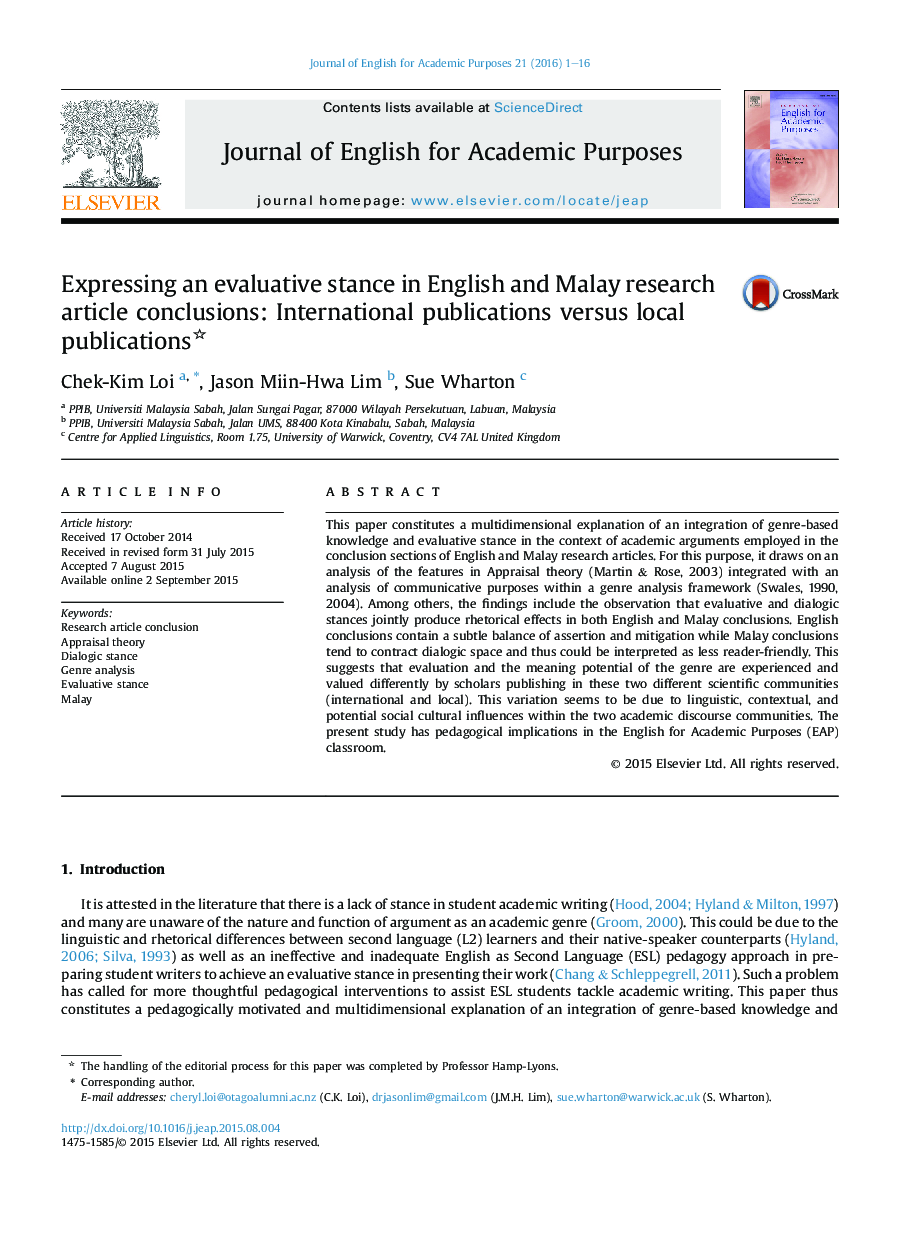| Article ID | Journal | Published Year | Pages | File Type |
|---|---|---|---|---|
| 360158 | Journal of English for Academic Purposes | 2016 | 16 Pages |
•English conclusions display a higher degree of critical stance.•English conclusions contain a subtle balance of assertion and mitigation.•Malay research conclusions tend to contract dialogic space.•Malay conclusions exhibit a lower propensity for making a study prominent.•Evaluative and dialogic stances produce rhetorical effects in both languages.
This paper constitutes a multidimensional explanation of an integration of genre-based knowledge and evaluative stance in the context of academic arguments employed in the conclusion sections of English and Malay research articles. For this purpose, it draws on an analysis of the features in Appraisal theory (Martin & Rose, 2003) integrated with an analysis of communicative purposes within a genre analysis framework (Swales, 1990, 2004). Among others, the findings include the observation that evaluative and dialogic stances jointly produce rhetorical effects in both English and Malay conclusions. English conclusions contain a subtle balance of assertion and mitigation while Malay conclusions tend to contract dialogic space and thus could be interpreted as less reader-friendly. This suggests that evaluation and the meaning potential of the genre are experienced and valued differently by scholars publishing in these two different scientific communities (international and local). This variation seems to be due to linguistic, contextual, and potential social cultural influences within the two academic discourse communities. The present study has pedagogical implications in the English for Academic Purposes (EAP) classroom.
